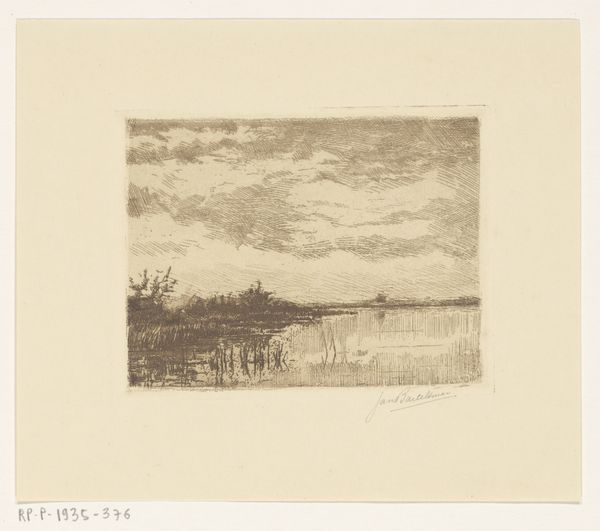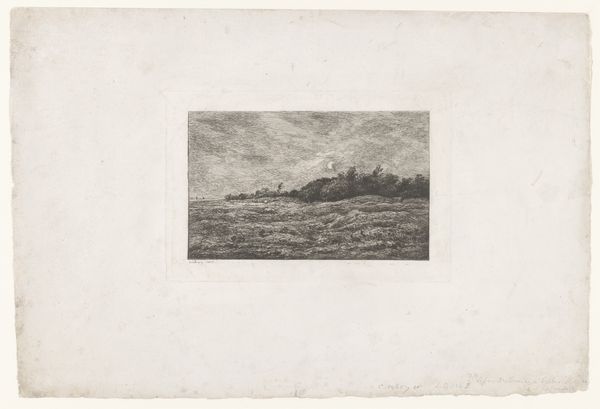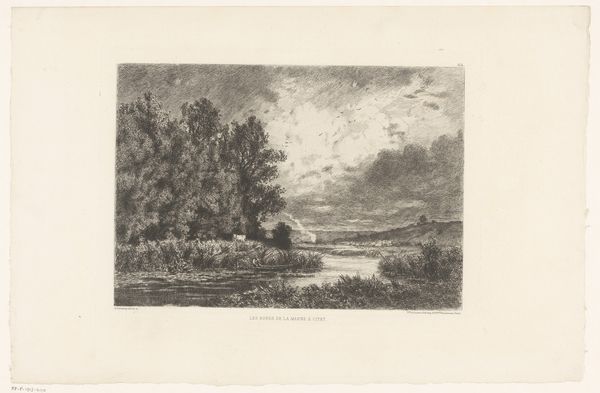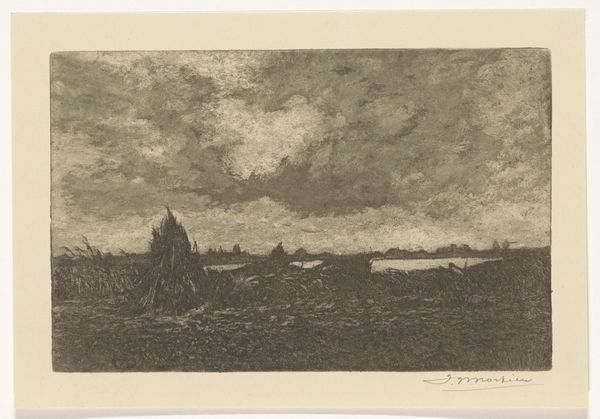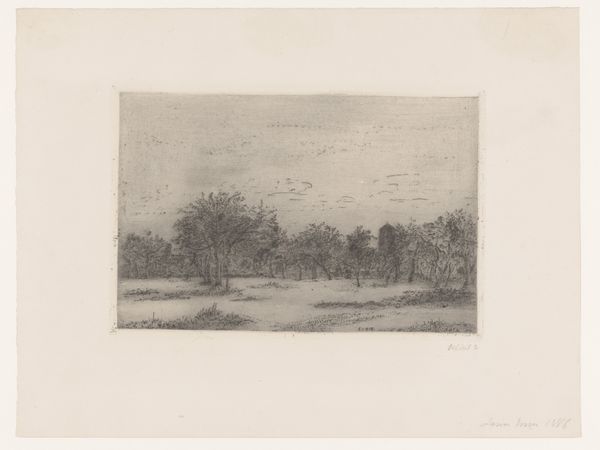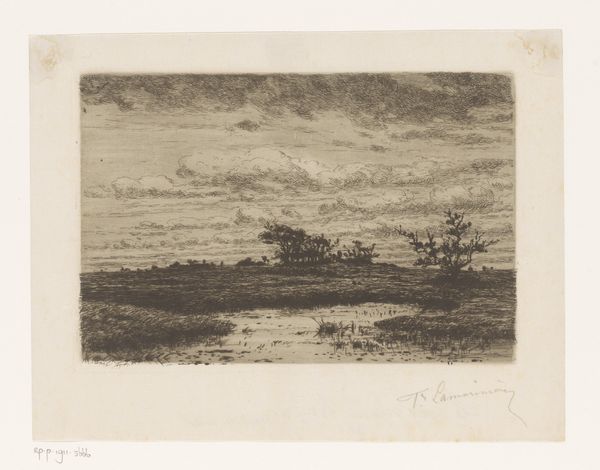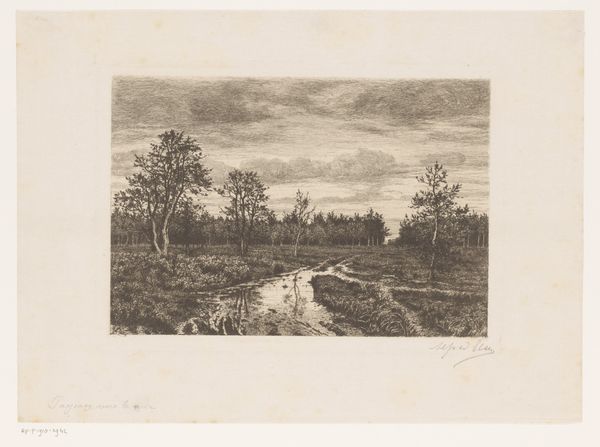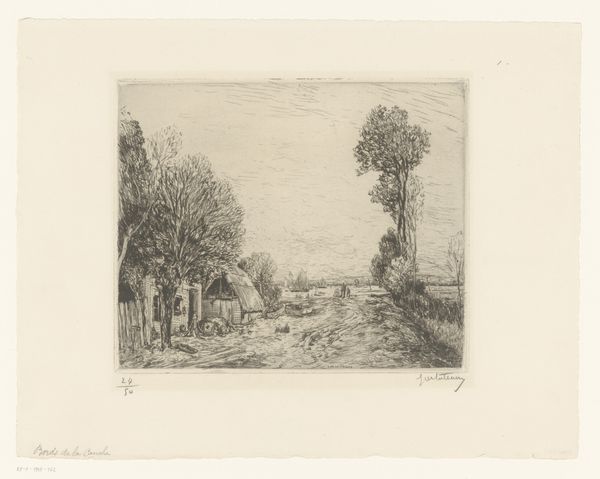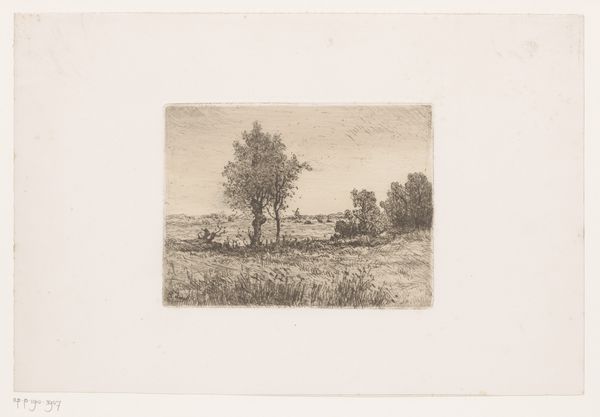
Dimensions: height 238 mm, width 319 mm
Copyright: Rijks Museum: Open Domain
Curator: This etching is titled "Landschap bij Hattem" created by Gerrit Haverkamp, likely between 1882 and 1926. It presents a serene landscape scene using the medium of printmaking. What's your initial reaction? Editor: Immediately, I'm struck by its tranquility, a real sense of peaceful isolation in nature. There's also a subtle, almost melancholic tone suggested by the muted, sepia palette. Curator: Haverkamp, while maybe not a household name today, participated in art circles that were significantly shaped by a revival of etching in the late 19th century, an embrace of craft amidst industrial changes. Editor: Yes, I think seeing it as part of that social turn towards appreciating craft and simplicity makes sense. Are there clear influences visible? It strikes me that this would resonate with feminist audiences for the focus on what one might call ‘overlooked’ artforms… Curator: While Haverkamp was working, realism and impressionism were emerging—styles characterized by everyday subject matter. This print captures a specific locality, hinting at Haverkamp’s ties to representing regional identities and his subtle approach to conveying local culture through art. Editor: I agree; there's definitely a strong sense of place here. The meticulous lines used in the etching convey an atmosphere, although a very subdued one. The clouds and the horizon give us just enough—what might this kind of imagery suggest about connections between landscape and the everyday rural populations? Curator: It makes us consider the interplay between humanity and nature and how artistic representations of landscapes have historically played into nation-building, constructions of ‘national identity,’ and yes, in this rural imagery, even implicit class distinctions. How these landscapes have been perceived is shaped through such political lenses. Editor: Definitely, so by re-evaluating his etchings, and focusing on the historical landscape through this method, can also reflect modern struggles such as a need to connect back to nature, right? Or reflect our current anxiety regarding what that nature might look like in years to come. Curator: Precisely. Seeing Haverkamp’s work invites us to look more closely at familiar settings but with critical perspectives rooted in current dialogues about the politics of land and representations thereof. Editor: Thinking about Gerrit Haverkamp's "Landschap bij Hattem," what really resonates is the historical context shaping both production and present understanding of art in connection with crucial questions about environment and society. Curator: And from a historical perspective, this work emphasizes the importance of understanding broader shifts within art and cultural institutions themselves—how tastes evolve, how artistic communities support regional narratives.
Comments
No comments
Be the first to comment and join the conversation on the ultimate creative platform.
